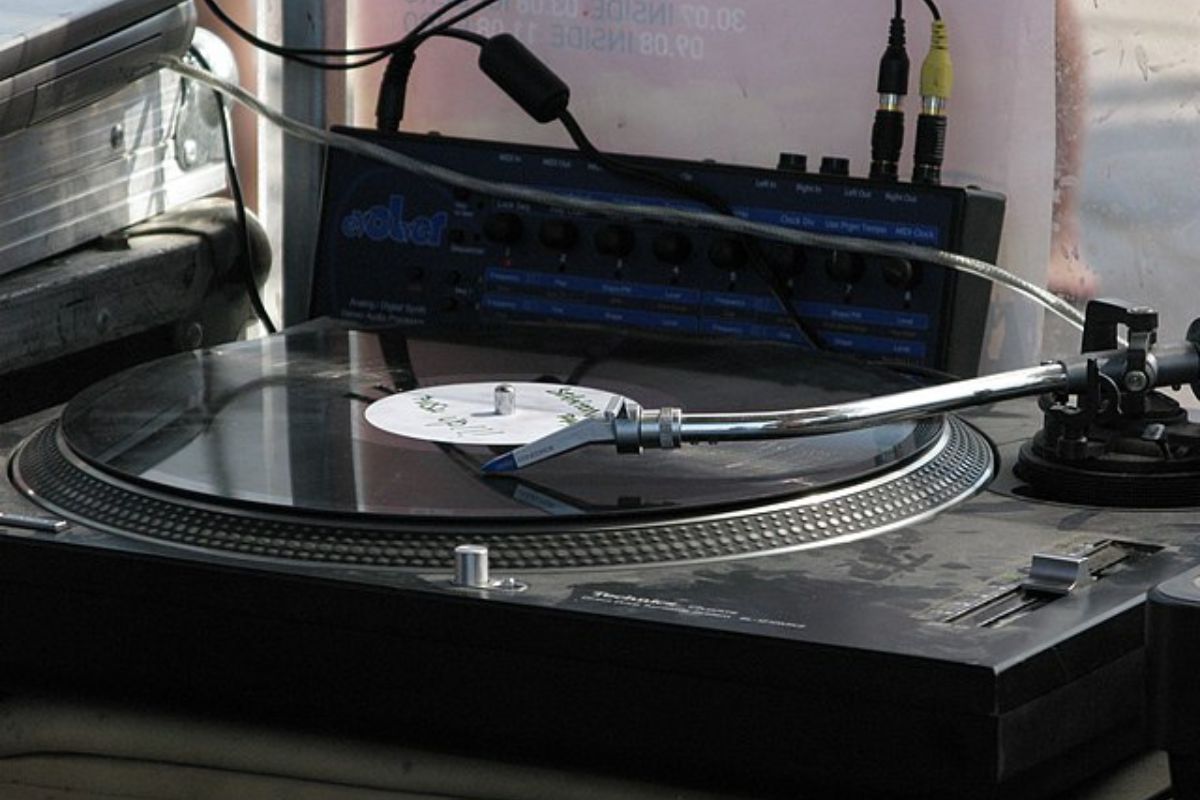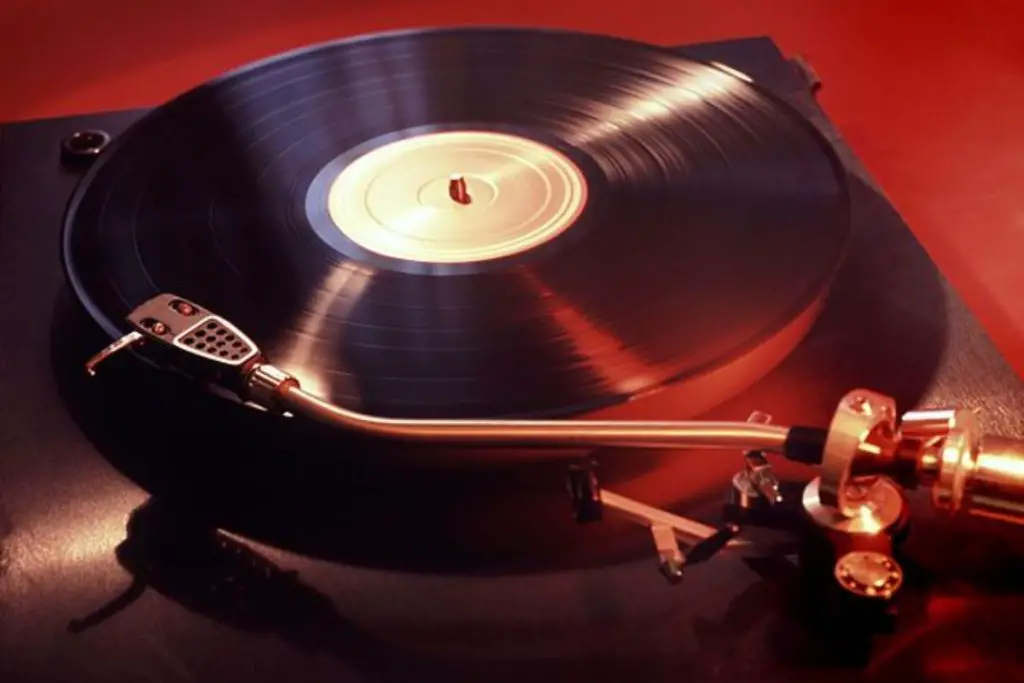Have you ever wondered what makes vinyl so timeless? How can a simple black disc bring forth a rich symphony of sound, captivating our senses and transporting us to another era? In a world of digital convenience, vinyl records stand as a testament to the enduring magic of music. Let’s delve into the captivating world of vinyl, exploring its intricate workings and the revolution it sparked in the music industry.
What is vinyl in music? Vinyl in music refers to the iconic medium of sound reproduction that involves etching and recording sound waves onto the grooves of a vinyl record, played back using a stylus and a record player. Its timeless format has shaped the music industry, providing a unique and immersive listening experience that captivates music enthusiasts across generations.
How do vinyl records work?
Vinyl records are physical, tangible objects that store music in a unique and mesmerizing way. Unlike those digital files on your computer, vinyl records work by etching and recording sound waves onto grooves found on their surface.

A record player’s needle, or stylus, is one of several parts of a transducer. A transducer changes mechanical energy into electrical energy and electrical energy into mechanical energy. The system contains a stylus, magnets, coils, a cantilever, and a body within a cartridge. The mechanical energy from the sound waves is converted into electrical energy, which is then sent into the amplifier and out to the speakers.
The mechanical energy from the sound waves is converted into electrical energy,
which is then sent into the amplifier and out to the speakers.
It’s like witnessing music in its most raw and authentic form! It’s the experience that makes you feel connected to the music in a way that digital files can’t match.
AKAI Professional MPK Mini MK3

AKAI Professional MPK Mini MK3
What are the different types of vinyl?
Types of vinyl records offer diverse formats, sizes, and playback speeds, each serving a unique purpose and providing distinct listening experiences. Let’s explore each type, its description, and its common uses.
| Type of Vinyl Record | Description |
|---|---|
| 12 Inch LP Albums | Introduced in 1948, LP albums are 12-inch vinyl records played at 33 1/3 RPM, offering longer playback time and the ability to hold up to 26 minutes of music per side. |
| 7 Inch Singles | Also known as “45s,” 7-inch vinyl singles are played at 45 RPM and became popular in the 1950s and 60s due to their affordability compared to larger LPs. |
| 12 Inch Singles | Singles, short EPs, early rock and roll culture, and collectors’ items. |
| Colored Vinyl | Colored vinyl records come in various colors and patterns, adding visual appeal to the record. The sound quality is generally comparable to standard black vinyl. |
| Picture Discs | Picture discs feature images or artwork printed on the vinyl surface. They are visually distinctive but may have slightly compromised sound quality compared to standard vinyl. |
| 10 Inch Records | 10-inch vinyl records are smaller than 12-inch records and can hold around 12-15 minutes of music per side. They are often used for EPs or special releases. |
| 78 RPM Records | Vintage records played at 78 RPM were typically made from shellac and had smaller sizes. They were replaced by 45 and 33 1/3 RPM records in the 1950s. |
What is the impact and influence of vinyl on the music industry?
The vinyl record is the unsung hero of the music industry. They not only brought us the joy of listening but also ignited a revolution in the way we experienced music. Let’s explore how vinyl records have shaped the music industry and ushered in a new era of sonic diversity.
Vinyl’s Impact on the Music Industry:
- Greater diversity in music styles and genres
- Increased accessibility to recorded music for a wider audience
- Opening doors for independent artists and small labels
- Revitalizing the album format, encouraging artists to create cohesive bodies of work
Vinyl’s Influence on Music Listening:
- Enhanced sound quality and richer audio experience
- Encouragement of active listening and engagement with the music
- The physicality of vinyl creates a more tangible and interactive connection with the music.
- The revival of vinyl culture, with its unique rituals and aesthetic appeal
What’s the difference between vinyl records and digital records?
Vinyl records, cherished for their warm and nostalgic sound, offer a unique and immersive listening experience that connects us to the rich history and culture of music, while digital records, with their audio quality and convenience, provide a vast library of music. Let’s explore more about the differences between vinyl records and digital records.
Vinyl records
- Vinyl records are analog copies of sound pressed into vinyl in the shape of the original sound wave.
- They use a stylus to read the pattern in the grooves, which creates an electrical signal passed on to the speakers for sound reproduction.
- Vinyl records have a warmer, more life-like sound and are often preferred by enthusiasts for their perceived sound quality and nostalgia.
- They are prone to physical interference and noise, such as dust and scratches on the surface, which can affect the sound quality.
- Vinyl records offer a unique and tangible experience, with larger album artwork, collectibility, and support for local record shops.
Digital records
- Digital records transform the waveform of the original sound into a stream of ones and zeroes.
- They use lasers to read the binary data, which is then decoded and sent to the speakers for audio playback.
- Digital records offer superior technical quality with better signal-to-noise ratio, stereo channel separation, and consistent playback speed.
- They provide a wider dynamic range and more accurate representation of the original source due to the precise sampling of the audio.
- Digital records are convenient, easily accessible, and offer vast music libraries through streaming platforms and digital downloads.

What are the advantages and disadvantages of vinyl records?
Vinyl recordings offer a unique listening experience. Understanding the advantages and disadvantages of vinyl recordings can help you appreciate their unique qualities and make informed choices about your audio preferences.
Advantages of vinyl records
- Emotional connection: Vinyl records offer a tangible and physical connection to the music, evoking a sense of nostalgia and creating a uniquely emotional experience.
- Warm and authentic sound: The analog playback of vinyl records produces a warm and rich sound quality that many music enthusiasts cherish.
- Artistic appreciation: Vinyl records often come with larger album artwork and liner notes, allowing for a more immersive and visually appealing listening experience.
Disadvantages of vinyl records
- Fragility: Vinyl records are delicate and susceptible to scratches and damage, requiring careful handling and proper storage to maintain their optimal playback quality.
- Limited convenience: Compared to digital formats, vinyl records are less convenient for on-the-go or portable listening, as they require a turntable and a stationary setup.
- Higher cost: Vinyl records can be more expensive than digital or CD formats due to production costs, limited availability, and collector’s market demand.
If you want even more great tips and information, check out the video below.
Frequently Asked Questions (FAQ)
You’ve got questions, and I’ve got answers! Here are some commonly asked questions about vinyl records:
How do I care for my vinyl records?
Proper care is essential to keep your vinyl records in tip-top shape. Here are a few tips:
Store your records vertically to prevent warping. Keep them in a cool and dry place to avoid moisture damage. Handle records by their edges and avoid touching the playing surface.
Use a carbon fiber brush or an anti-static record cleaning brush to remove dust before playing.
Can I play vinyl records on any turntable?
Not all turntables are created equal! It’s crucial to use a turntable with a proper tonearm and cartridge designed for vinyl playback. Cheap or poorly calibrated turntables can damage your precious vinyl records, so invest in a decent setup to ensure optimal sound quality and longevity.
Can I convert vinyl records to digital format?
Absolutely! You can digitize your vinyl collection to enjoy it on digital devices. You’ll need a turntable with a USB output or an external phono preamp with USB connectivity. Software applications like Audacity can help you record and convert your vinyl tracks into digital files.
Conclusion
Vinyl is a versatile medium that has played a significant role in music for decades. It offers a unique listening experience with its distinct sound quality and physical presence. Despite the rise of digital formats, vinyl continues to captivate enthusiasts and collectors alike, showcasing its enduring appeal and timeless charm. If you have any questions or need further information, feel free to ask (I read and reply to every comment). Happy listening! Keep spinning those records, and let the music fill your soul!
Key Takeaways
This article covered the fascinating world of vinyl records, exploring their workings, their impact on the music industry, and the joys of analog playback. Here are some key takeaways:
- Vinyl records work by etching sound waves onto grooves and playing back using a stylus and turntable.
- They revolutionized the music industry, allowing for diverse recording and sharing of music.
- Vinyl records offer a warm, authentic sound and a unique, immersive listening experience.
- Digital recording and mechanical recording are alternative methods with their own characteristics.
- Vinyl records have experienced a resurgence in popularity, as reflected in the growth of vinyl album sales.















